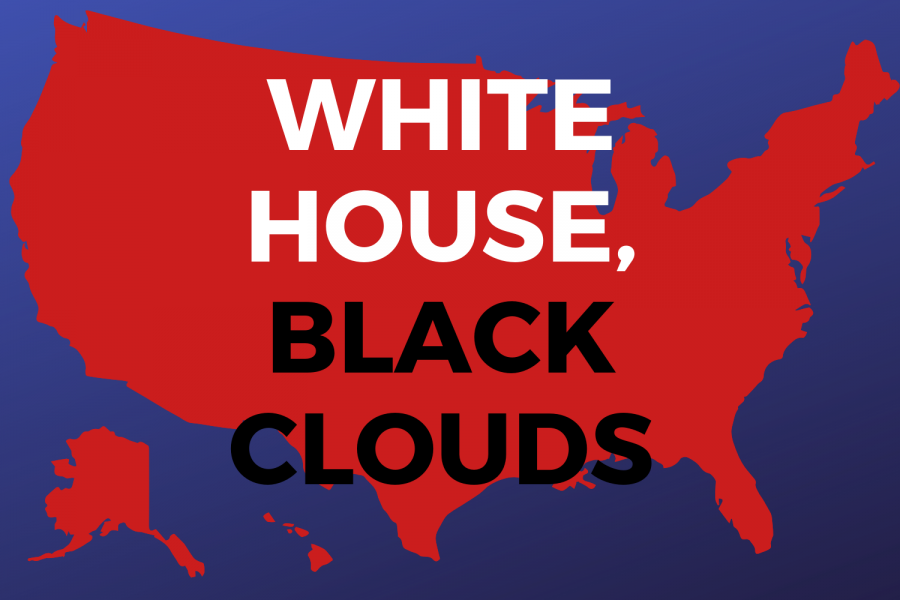Down in history
Former presidents ranked from bad to worst
May 3, 2019
- James Buchanan (1857-1861)
James Buchanan served as the 15th president of the United States, serving immediately prior to the American Civil War. Following his election, Buchanan, a staunch supporter of slavery, lobbied for the Supreme Court to uphold the Dred Scott v. Sandford ruling, one that maintained slaves as noncitizens and property. He continued to uphold efforts that encouraged the spread of slavery, such as endorsing the Lecompton Constitution, an attempt to admit Kansas as a slave state to the Union.
As he passively watched the ever-growing sectional crisis between the North and South, the Panic of 1857 marked another black mark on his presidency. An economic recession and increasing tensions created the perfect storm that would culminate in the Civil War. And Buchanan made no efforts to prevent it either.
A racist and noncommittal leader, Buchanan exemplified the hypocrisy and division of the nation. His failure to address slavery and secession of southern states allowed for the Civil War to occur.
- Andrew Jackson (1829-1837)
Andrew Jackson gained fame as a general in the United States Army and later as a presidential representative of the “common man”. During his lengthy time in the military, he purchased property and became a wealthy, slave-owning planter. It is reported that Jackson personally possessed over 300 slaves, all subjected to horrible treatment and even worse punishments.
Jackson’s presidency marked the beginning of the “spoils system”, or political nepotism. In 1830, Jackson signed the Indian Removal Act, in which Native Americans were forcibly and illegally removed from their property. To top off the illegal seizure of land and subjection of unwilling participants, Indigenous people were forced along the Trail of Tears, which led to the death of 4,000 natives.
One of the most controversial presidents, Jackson was divisive, with many enemies and supporters. While praised for being the “common man”, he lived a lavish lifestyle, made possible by the forced labor of the slaves. His treatment of Indians and overextension of power of the executive shows Jackson’s lack of concern for rules or people’s lives.
- Warren G. Harding (1921 – 1923)
During his administration, Harding was considered quite popular. It was only after his death and the exposure of the scandals that took place that his reputation eroded. Harding appointed many notable members to his cabinet, including Andrew Mellon and Herbert Hoover (who will also make an appearance on this list), and the infamous Albert Fall.
Harding’s extramarital affair did nothing to help his popularity. A known womanizer, his affair with Nan Britton didn’t phase anyone. Their illegitimate child did, however. In her book, “The President’s Daughter”, Britton claimed her daughter, Elizabeth Ann Blaesing, had been fathered by Harding. Her salacious book sold tremendously, as Britton revealed all the scandalous details of Harding’s sex life, which often took priority over presidential affairs.
No scandal was as detrimental to Harding’s career than the Teapot Dome Scandal. This land was set aside by the U.S. Navy in the event that if the U.S. went to war, enough oil would be available to power the ships. In 1922, Fall leased exclusive oil-drilling rights on the Teapot Dome and other sites to the Mammoth Oil Company, owned by a personal friend of Fall. Soon after investigations, Fall became the first presidential cabinet member to go to prison, and Harding became synonymous with a corrupt and failed administration.
- Franklin Pierce (1853 – 1857)
As the 14th president, Pierce served almost immediately prior to the Civil War. A northern Democrat, he saw the abolitionist movement as a threat to the sovereignty of the US, and thus vehemently pursued southern, pro-slavery initiatives.
Part of these interests included rampant expansionism, including the endorsement of the Kansas-Nebraska Act, which nullified the northern-approved Missouri Compromise but garnered him southern support. Such passage led to violent conflict, colloquially known as Bleeding Kansas, years of electoral fraud, raids, assaults, and retributive murders. Pierce further antagonized free-soiler Americans with his insistence to maintain slavery and the Fugitive Slave Act, which forced free states to enforce the capture and return of fugitive slaves.
Following the success of this expansionist policy, or utter lack thereof, Pierce continued to damage his reputation when he issued the Ostend Manifesto, calling for the annexation of Cuba. During his bid for presidential re-election in 1856, Pierce was surprised to find that his party and the majority of the country had abandoned him. After his failure to reclaim the presidency, Peirce floated into obscurity, eventually meeting his end at the bottom of a bottle.
- Herbert Hoover (1929 – 1933)
Probably one of the most politically inept presidents, Hoover is regarded as highly unpopular.
His belief in voluntarism and cooperation as the solution to the Great Depression shows Hoover’s inability to understand the severity of the economic crisis in the US and the power of the federal government to accurately address it.
Furthermore, his adamant refusal to give federal aid to uplift the economy deeply alienated the voting public, and probably worked to sustain the depression rather than solve it. Hoover was, and is, seen to be an overly-conservative and insensitive president that subjected millions of Americans to economic suffering.















